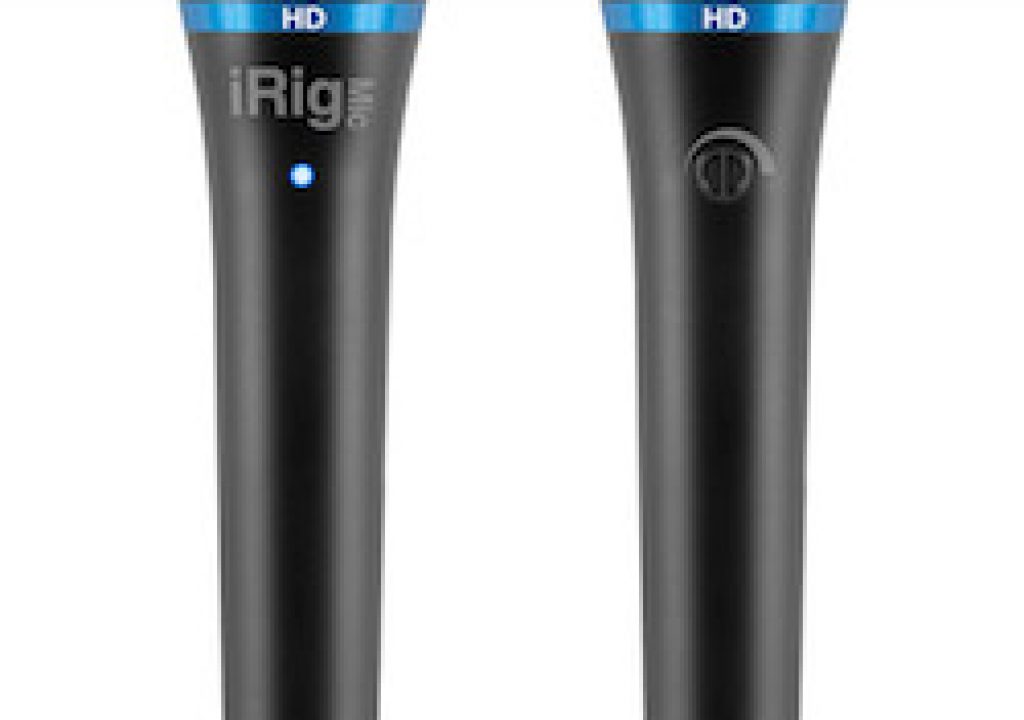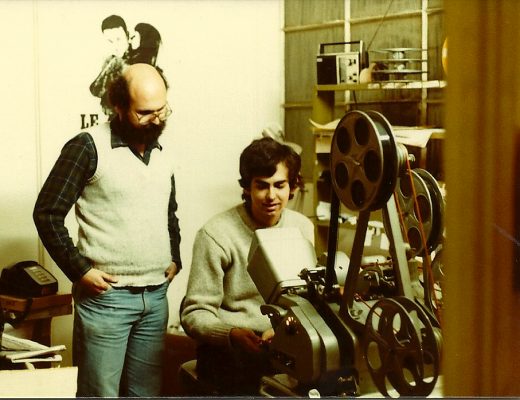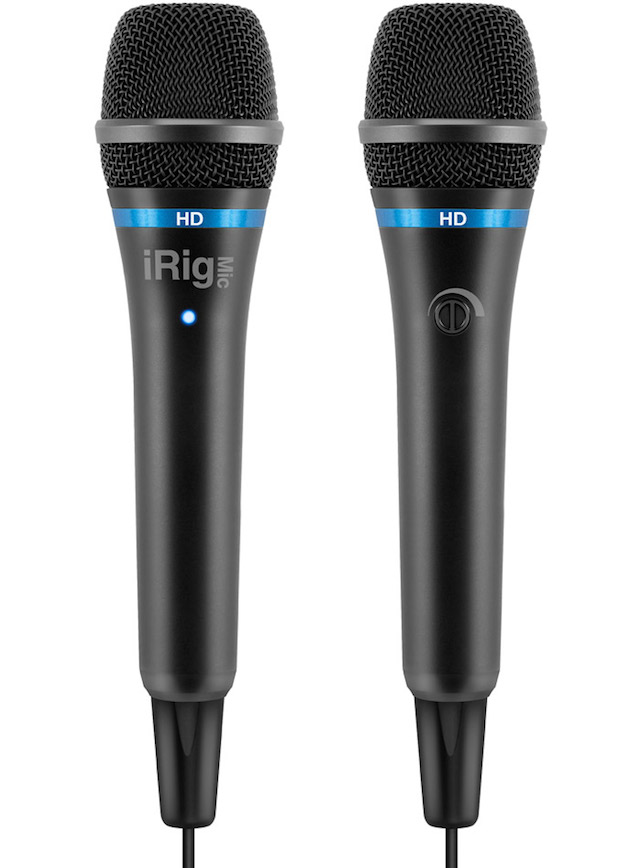
I am honored to be one of a few tech journalists who have received the iRig Mic HD from IK Multimedia for initial review. The iRig Mic HD is a handheld digital-exclusive mic, made for use with iOS (iPad/iPhone/iPod Touch), Mac and Windows and produces rich and full bodied sound recordings (and this is not a shampoo commercial). I have a lot to say about the iRig Mic HD, so let’s get started.
The iRig Mic HD official kit costs US$129.99 and includes a USB cable (to connect to Mac or Windows computers) and Lightning cable (to connect to Apple’s latest iOS devices, including iPad/iPhone/iPod Touch), together with some other accessories I’ll cover ahead. If you have an earlier iOS device with a 30-pin connector instead of Lightning, there is an optional cable available. Unlike a different microphone I’ll be comparing ahead in this article, the iRig Mic HD is digital only, meaning that it has no analog outputs.
What do we mean by a digital microphone?
When we say a digital microphone, we mean that it has a built-in preamplifier, A>D (analog-to-digital) converter, and a digital output. We don't mean that the actual microphone element is digital (which it is not), just as when we talk about a digital speaker, we don't mean that the cone is digital… or when we talk about a USB printer, we don't mean that the actual print head is USB.
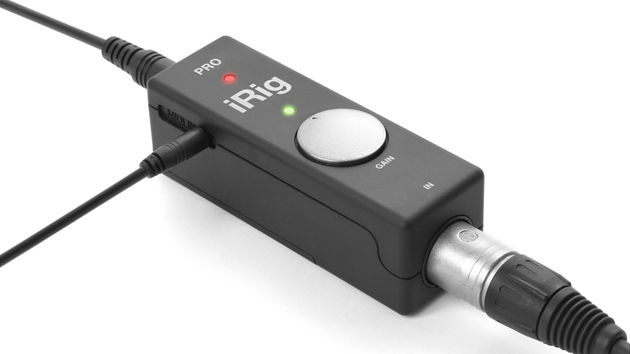
IK Multimedia’s iRig Pro preamp/A>D device (which I reviewed very recently) costs US$149.99, and can convert any analog microphone into a digital one. The iRig Mic HD I am covering in this article has a built-in preamp and A>D with the same high-end specs, which include either 44.1 kHz or 48 kHz sampling at either 16-bit or 24-bit depth (as long as your recording software supports it—more about that later). Some readers might ask: “Oh, so with the iRig Mic HD I get essentially the same high-end preamp and A>D converter, plus a high-end microphone, for US$20 less?” The answer is yes, with a dual explanation: (1) IK Multimedia is likely to sell many more iRig Mic HD microphones than they are likely to sell of the iRig Pro preamp A>D converter, and (2) with the iRig Pro preamp, you can connect virtually any source, be it a different mic you may already own, the output of a mixer (as I did), an instrument, or even a MIDI device. That’s not what the iRig Mic HD does. The iRig Mic HD is a digital microphone.
iRig Mic HD construction
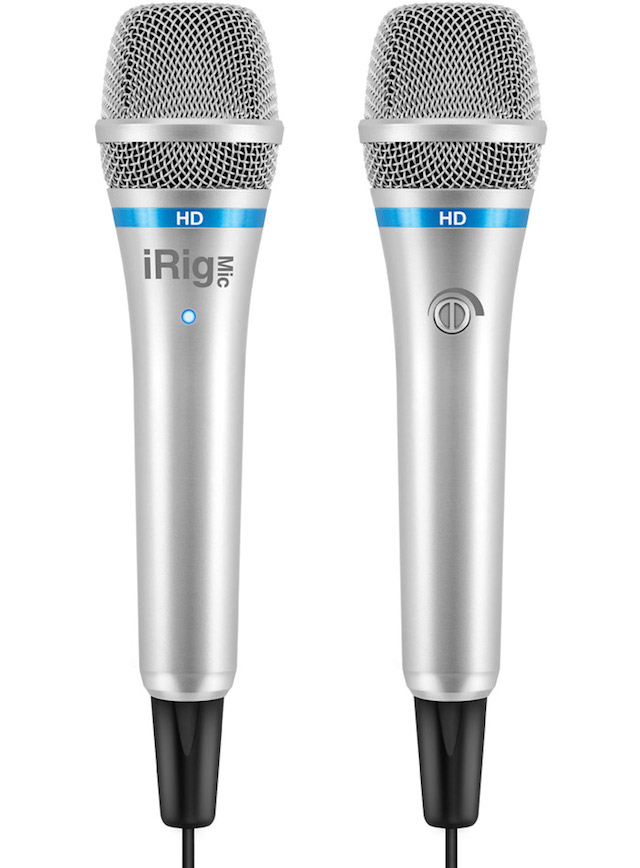
The iRig Mic HD is available either in black or silver. The review unit I received is a silver one (which I am told is sold exclusively via the Apple Store). The actual element is electret condenser. This is something that is likely to excite musicians and simultaneously turn off some seasoned ENG (Electronic News Gathering) professionals. For those of you who have worked in television sports or news production for many years, please read my recent article called Handheld vocal microphones: a trend towards condenser electret? and also understand that the iRig Mic HD features a metal body which is likely to be more resistant to bangs than the smartphone or tablet where you are likely to connect it. The iRig Mic HD feels good and sturdy in my hand.
Gain adjustment and measurement
The iRig Mic HD has a built-in gain control adjustment, which I like for the same reason I like the one on the iRig Pro converter I recently reviewed: it is stiff, and therefore unlikely to be moved by mistake. Evidently due to space constraints, it is smaller than the one in the iRig Pro. On the opposite side of the iRig Mic HD there is a multicolor LED that you’ll use to set a proper level. For the recording you are going to hear ahead in this article, I had the gain set to about 2:00 on the potentiometer (in clock nomenclature).
May I use a mic flag with the iRig Mic HD?
After trying it myself, I don’t recommend the use of a traditional mic flag with the iRig Mic HD. Unlike the other mic I’ll be comparing ahead, it is not only a question of the mic being too short to hold with the microphone comfortably without part of your hand touching the cable below. The other issue with the iRig Mic HD is that the mic flag will block both the gain adjustment and the LED. But I have a better solution for you:

The above image is from my recent article, called RT and DirecTV Sports go beyond conventional mic flags. This article goes in detail about several advantages of using a branded windscreen instead of a traditional mic flag. Although the iRig Mic HD does include a built-in windscreen, adding another branded one will give you extra protection against plosives while giving you superior branding, since your logo will be much closer to the speaker’s face.
On page two of this article
On page two of this article, you’ll find:
- Comparative audio recordings made with the iRig Mic HD and another mic
- Usability of more than one mic simultaneously
- A comparison chart between the two mics
- Observations about the cardioid pickup pattern
- Applications included from IK Multimedia
- Conclusions
Click here for page 2 of this article…
Audio recordings
Below you’ll find an audio recording with the iRig Mic HD microphone, followed by a recording made minutes later with the AT2005USB from Audio Technica, the closest mic I know on the market, and that I also had available to make a comparison. Both recordings were done at the audio-for-video standard of 48 kHz. The iRig Mic HD was recorded at 24-bit to show its best recording quality, while the AT2005USB was recorded (using its own internal preamp and A>D converter) at 16-bit, since that’s the only mode it offers. I didn’t add any equalization or compression. I only applied normalization to these clips.
To download the original WAVE files, and/or if you have difficulty hearing the streaming files here on this page, click on the SoundCloud logo in the corner of the player. You’ll be brought to the files on the SoundCloud site, where you can stream or download.
To my ear, the recording of the iRig Mic HD sounds brighter and has more body. The recording from the AT2005USB sounds like it may be pre-equalized for the human voice since it sounds bassier and raspier to me, but it does not have as much body. The AT2005USB seems to be more sensitive to handling sounds (when I moved my fingers), while the iRig Mic HD seems more sensitive to plosives. Neither one had any external windscreen on it (recall my recommendation in the mic flag section of this article), and of course I was exaggerating the handling (by moving my fingers) to test for its sensitivity. In a real standup or interview, I would attempt to avoid handling sounds with any mic by limiting my finger movement.
Comparison chart of AT2005USB with iRig Mic HD
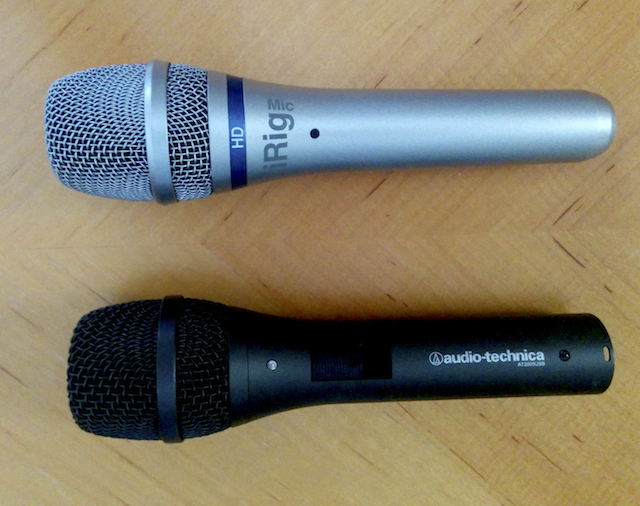
Here is a comparison chart I created between the AT2005USB and the iRig Mic HD. I have become quite fond of both of them, and I want to help you see the exact similarities, differences, as well as when one may be more appropriate than the other.
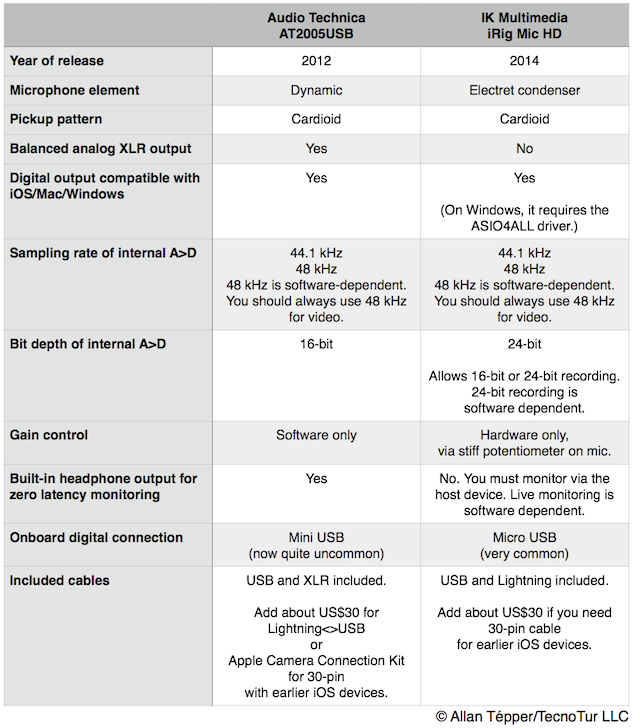
May I use more than one iRig Mic HD together?
I have never seen an audio mixer with USB or Lightning inputs. Likewise, I have never seen any way to connect more than one digital mic to an iOS device. Although theoretically, you can connect multiple USB mics to a Mac simultaneously by creating an aggregate device via the Audio Midi Setup (which is currently located in the Utility folder in modern Macs), in my personal experience, this feature became unacceptably unreliable with the introduction of Mac OS 10.6 (we are now at 10.9.9). I will only condone this capability again if and when either IK Multimedia or some other reliable source recommends it.
As a result, the only reliable way I know to use multiple iRig Mic HD microphones would be to have each record independently on different iOS devices (or computers) and then combine and synchronize the independent recordings. This is a common feature nowadays in Final Cut Pro X and Adobe Premiere CC and has become very simple to do. However, if you want to broadcast live or record “live-to-drive” (avoiding post production steps), I would recommend the setup described in a prior article, which involves the use of multiple analog mics (actually, AT2005USB mics using their analog outputs), and an automatic mixer to avoid crosstalk, and an iRig Pro A>D converter from IK Multimedia.
About cardioid pickup patterns
Having a cardioid pickup pattern on a microphone has the advantage of reducing much of the background sound, making the voice(s) more intelligible. However, when doing an interactive news interview with a single handheld cardioid microphone, no matter how experienced or agile the reporter is in toggling the mic’s position between the two people, there is almost always an unexpected interruption by either side which causes one of the two parties to sound “off mic” (much quieter) or sometimes almost inaudible. As a result, some ENG (Electronic News Gathering) crews prefer to use an omnidirectional pattern. However, this is not an issue with documentaries (or news done in the documentary style), where the interviewer is not expected to be heard, and questions are asked in such a way that responses are given in complete sentences. This is also not an issue if two separate microphones are used. In the case of the iRig Mic HD, this would mean a separate recording on a separate device, to be combined and synchronized in post, as explained in the prior section.
Other included accessories
In addition to the Lightning and USB cables, the iRig Mic HD also includes a mic clip, a zippered storage bag, and a 5/8” to 3/8” thread adapter.
Applications included from IK Multimedia
IK Multimedia includes several music production apps, some for iOS and some for Mac. I didn’t used any of them since I am not a musician. IK Multimedia also offers two versions of an audio recording application called iRig Recorder. Unfortunately (just as I stated back in my 2012 review of the original iRig Pre) I still cannot recommend either version of the iRig Recorder, since neither the free nor the paid version yet supports 48 kHz. Instead, the iRig Recorder app is still limited to 44.1 kHz only. As stated in many prior articles, 48 kHz is the absolute standard for audio sampling for digital video. Whether we are talking about DVDs, Blu-rays, or HD videotape formats (like HDV, Panasonic’s DVCProHD, Sony’s HDCAM or HDCAM-SR), or DCP, the standard sampling rate is 48 kHz. Although online video services like Vimeo Pro and YouTube will accept non-standard video with audio sampling incorrectly sampled at 44.1 kHz, nothing is gained by sampling the audio at a non-standard rate, since Vimeo Pro and YouTube will also accept videos with the standard 48 kHz audio. Until IK Multimedia adds support for 48 kHz, I must continue to recommend the RØDE Rec audio app instead for anyone involved with video production, or for recording video on iOS, I recommend FilMiC Pro, which also supports 48 kHz. Fortunately, the designers of the iRig Mic HD made the hardware for both 44.1 and 48 kHz, as I verified, and it works. In fact (as stated earlier), when recording with capable software, we can even record 48 kHz at 24-bit from the iRig Mic HD.
Conclusions
The iRig Mic HD sounds great for the price and is directly compatible with newer iOS devices, Macs, and Windows computers. It is ideal when it is going to be the only mic used, or when it is used with other mics, creating independent recordings of each, with later synchronization.
I’ll make further recordings soon in other situations, including with a professional singer.
Upcoming articles, reviews, and books
Stand by for upcoming articles, reviews, and books. Sign up to my free mailing list by clicking here.
Si deseas suscribirte a mi lista en castellano, visita aquí. Si prefieres, puedes suscribirte a ambas listas (castellano e inglés).
My latest book (paperback + ebook)
My most recent book is available in two languages, and in paperback as well as an ebook. The ebook format is Kindle, but even if you don’t have a Kindle device, you can read Kindle books on many other devices using a free Kindle app. That includes iPad, Android tablets, Mac computers, and Windows computers. Although generally speaking, Kindle books are readable on smartphones like Androids and iPhones, I don’t recommend it for this particular book since it contains both color photos and color comparison charts. The ebook is also DRM-free.
In English:

In English, it is currently available in the following Amazon stores, depending upon your region:
- Amazon.com, for the US and other countries in the Americas that don’t currently have their own Amazon store, or anywhere if you simply prefer it
- Amazon.br for Brazil
- Amazon.ca for Canada
- Amazon.de for Germany
- Amazon.es for Spain pero a lo mejor lo preferirás en castellano, a continuación)
- Amazon.fr for France
- Amazon.in for India
- Amazon.it for Italy
- Amazon.co.jp for Japan
- Amazon.com.mx for México
- Amazon.co.uk for the United Kingdom
Or in your favorite bookstore by requesting ISBN–10: 1456310232 or ISBN–13: 978–1456310233.
En castellano:

En castellano, está disponible actualmente en las siguientes tiendas Amazon, según tu región:
- Amazon.com para EE.UU. y todas las Américas donde no existe ninguna tienda particular… o en cualquier parte si simplemente lo prefieres
- Amazon.com.br para Brasil
- Amazon.co.jp para Japón
- Amazon.de para Alemania
- Amazon.es para España
- Amazon.fr (Francia)
- Amazon.in para India
- Amazon.it para Italia
- Amazon.com.mx para México
- Amazon.co.uk para el Reino Unido
o en tu librería preferida al solicitar el ISBN–10: 1492783390 ó el ISBN–13: 978–1492783398.
Allan Tépper’s other books, consulting, articles, seminars & audio programs
Contact Allan Tépper for consulting, or find a full listing of his books, articles and upcoming seminars and webinars at AllanTepper.com. Listen to his TecnoTur program, which is now available both in Castilian (aka “Spanish”) and in English, free of charge. Search for TecnoTur in iTunes or visit TecnoTur.us for more information.
FTC disclosure
No manufacturer is specifically paying Allan Tépper or TecnoTur LLC to write this article or the mentioned books. Some of the other manufacturers listed above have contracted Tépper and/or TecnoTur LLC to carry out consulting and/or translations/localizations/transcreations. Many of the manufacturers listed above have sent Allan Tépper review units. So far, none of the manufacturers listed above is/are sponsors of the TecnoTur programs, although they are welcome to do so, and some are, may be (or may have been) sponsors of ProVideo Coalition magazine. Some links to third parties listed in this article and/or on this web page may indirectly benefit TecnoTur LLC via affiliate programs.
Copyright and use of this article
The articles contained in the TecnoTur channel in ProVideo Coalition magazine are copyright Allan Tépper/TecnoTur LLC, except where otherwise attributed. Unauthorized use is prohibited without prior approval, except for short quotes which link back to this page, which are encouraged!

Filmtools
Filmmakers go-to destination for pre-production, production & post production equipment!
Shop Now